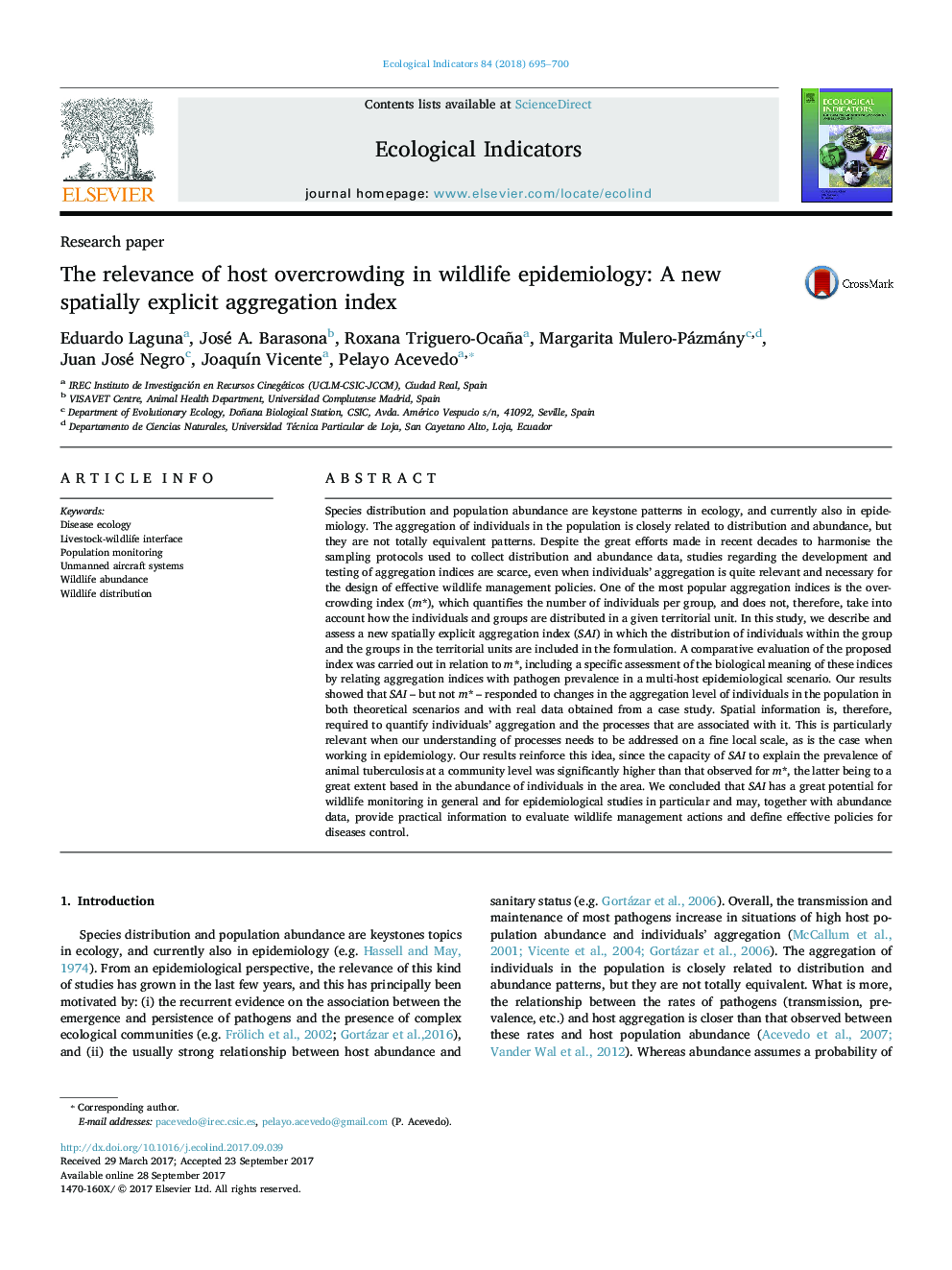| کد مقاله | کد نشریه | سال انتشار | مقاله انگلیسی | نسخه تمام متن |
|---|---|---|---|---|
| 5741590 | 1617118 | 2018 | 6 صفحه PDF | دانلود رایگان |
- The aggregation of individuals is related to distribution and abundance.
- The overcrowding index (m*) only takes into account the individuals per group.
- The new aggregation index (SAI) considers the individuals abundance and distribution.
- SAI - but not m* - responded to changes in the aggregation of individuals.
- SAI explained the prevalence of tuberculosis significantly better than m*.
Species distribution and population abundance are keystone patterns in ecology, and currently also in epidemiology. The aggregation of individuals in the population is closely related to distribution and abundance, but they are not totally equivalent patterns. Despite the great efforts made in recent decades to harmonise the sampling protocols used to collect distribution and abundance data, studies regarding the development and testing of aggregation indices are scarce, even when individuals' aggregation is quite relevant and necessary for the design of effective wildlife management policies. One of the most popular aggregation indices is the overcrowding index (m*), which quantifies the number of individuals per group, and does not, therefore, take into account how the individuals and groups are distributed in a given territorial unit. In this study, we describe and assess a new spatially explicit aggregation index (SAI) in which the distribution of individuals within the group and the groups in the territorial units are included in the formulation. A comparative evaluation of the proposed index was carried out in relation to m*, including a specific assessment of the biological meaning of these indices by relating aggregation indices with pathogen prevalence in a multi-host epidemiological scenario. Our results showed that SAI - but not m* - responded to changes in the aggregation level of individuals in the population in both theoretical scenarios and with real data obtained from a case study. Spatial information is, therefore, required to quantify individuals' aggregation and the processes that are associated with it. This is particularly relevant when our understanding of processes needs to be addressed on a fine local scale, as is the case when working in epidemiology. Our results reinforce this idea, since the capacity of SAI to explain the prevalence of animal tuberculosis at a community level was significantly higher than that observed for m*, the latter being to a great extent based in the abundance of individuals in the area. We concluded that SAI has a great potential for wildlife monitoring in general and for epidemiological studies in particular and may, together with abundance data, provide practical information to evaluate wildlife management actions and define effective policies for diseases control.
Journal: Ecological Indicators - Volume 84, January 2018, Pages 695-700
